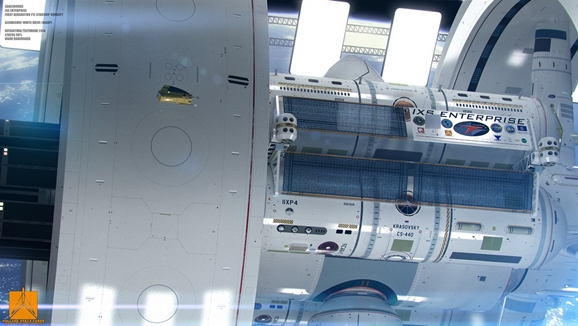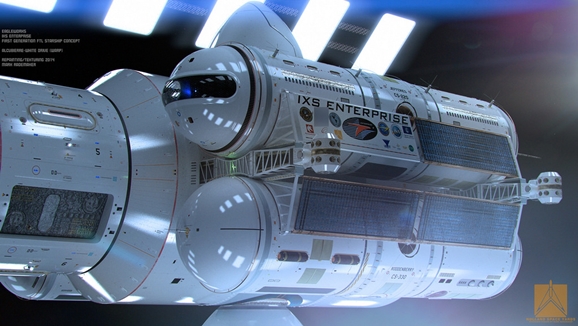NASA’s New Concept Spaceship
Nasa reveals latest designs for a Star Trek-style spacecraft that could make interstellar travel a reality
A Nasa scientist in Houston worked with an artist to create the concept The interstellar spacecraft builds on previous designs that theoretically allow distant travel by bending space-time Called IXS Enterprise, it is similar to the Star Trek ship of the same name.
Dr White said the spacecraft could reach Alpha Centauri in two weeks Warp travel is the focus of Christopher Nolan’s 2014 movie Interstellar.
Last month, Dark Knight director Christopher Nolan unveiled his next science-fiction blockbuster. Called Interstellar, it envisages a future where travel to other stars is not only a possibility but a necessity, and tasks actor Matthew McConaughey with leading the main mission. But a Nasa scientist claims such a mission isn’t necessarily just something reserved for science fiction – and has revealed a Star Trek-style ship that could make interstellar travel a reality.
Dr Harold White is famous for suggesting that faster than light (FTL) travel is possible. Using something known as an Alcubierre drive, named after a Mexican theoretical physicist of the same name, Dr White said it is possible to ‘bend’ space-time, and cover large distances almost instantly. This, in essence, would allow a spaceship to travel almost anywhere in a tiny fraction of the time it would take a conventional spacecraft.
The ship in Nolan’s Interstellar movie, as well as those in Star Trek, employ a warp engine. And, in a series of new renders, Dr White reveals how a real spacecraft dubbed the IXS Enterprise could do the same thing. The images are based on the artist who created the original look for the famous USS Enterprise ship from Star Trek – Matthew Jeffries.
To make the latest renders Dr White employed the help of artist Mark Rademaker and graphic designer Mike Okuda. Although the speed of light is seen as an absolute, Dr White was inspired by Miguel Alcubierre, who postulated a theory that allowed for faster than light travel but without contradicting Einstein. Alcubierre’s theory was published in 1994 and involved enormous amounts of energy being used to expand and contract space itself – thereby generating a ‘warp bubble’ in which a spacecraft would travel. Allowing space and time to act as the propellant by pulling the craft through the bubble would be like stepping on an escalator. Despite Dr Alcubierre stating his theory was simply conjecture, Dr White thinks he and his team are edging towards making the realm of warp speed attainable. Their engine could get to Alpha Centauri in two weeks as measured by clocks on Earth.
The process of going to warp is also one that is smooth, rather than using a massive amount of acceleration in a short amount of time. ‘When you turn the field on, everybody doesn’t go slamming against the bulkhead, which would be a very short and sad trip,’ Dr White said. However, Dr White admits his research is still small-scale and is light years away from any type of engine that could be constructed into a spaceship like the USS Enterprise. To make the dream a reality Dr White has laid out a road map with important milestones that will need to be met along the way to achieving true interstellar travel. This begins with tests on Earth to prove the technology is possible. These initial experiments are very crude and very basic – but, if proved, there is, in theory, no limit to how it can be applied.
The next step will be to use the warp technology on a spacecraft and complete a short trip to the moon, followed by a trip to Mars. This would ultimately test the technologies that would be necessary to complete ‘jumps’ beyond the solar system and reach destinations in a matter of months, weeks or even days.
The main limitation is energy – previously it was thought mass equivalent to a planet would be necessary to provide the energy required for a warp jump. But revised suggestions suggest mass similar in size to a car might be more realistic. The research has done enough to pique the interest of Nasa and other agencies. The Defense Advanced Research Projects Agency (Darpa), for instance, is currently carrying out the 100-year-starship project with a view to sending humans outside the solar system at the turn of the next century.
Source: Jonathan O’Callaghan / DailyMail
====================================
WARP DRIVE – Space Conference
Dr Harold White – NASA’s Advanced Propulsion Lead




